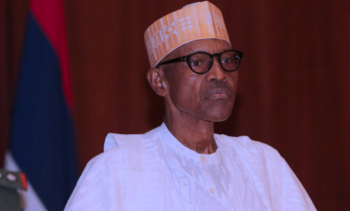
In the wake of the recession that was formally announced by the Nigerian Bureau of Statistics in August 2016, the Federal Government came up with the Economic Growth and Recovery Plan. On the 5th of April, 2017, President Muhammadu Buhari launched the Economic Growth and Recovery Plan (EGRP) for years 2017-2020. The main thrustsof the Plan are: the optimisation of local content and empowerment local businesses. On the positive outlook, this would be the first comprehensive plan, and commendably so, by this administration. The key principles are to stabilize the macroeconomic environment, achieving agriculture and food security; and ensure energy sufficiency (power and petroleumproducts). The plan also aims to improve transportation infrastructure, and drive industrialization by focusing on small and medium scale enterprises. Realistically, quite a number of the projections in the plan are a bit phantasmagorical and somewhat ambitious. Nevertheless, one can only trust the resolve and political will of the drivers to see to the implementation of the EGRP for the benefit of all.
The Plan projects an average real GDP growth of 4.62%within the cycle of the plan, with oil production estimated to peak at 2.5million barrel by 2020. Similarly, the plan suggests that non-oil revenue will be enhanced through improved tax and customs administration, among other laudable and well-articulated components. As expected, the government created noticeable publicity around the plan and indeed raised expectations that Nigeria would be out of recession soon, and will be returned to the path of economic restoration. So far, the government appears to have raised the bar in tax awareness and more firms and individuals are being added into the tax net daily. If one were to assess the EGRP since its launch by the improved administration of tax, then the plan is definitely on course.
Notwithstanding, the much talked about diversification of the economy still appears to be rhetorical. An analysis based on the principles of the plan shows that in six months of its launch, not much has been achieved in the area of economic diversification and overall implementation of the plan. The agricultural sector that is expected to drive the diversification still appear uninspiring; no activity or policy statement have been communicated by the Federal Ministry of Agriculture to demonstrate efforts at implementing the expectations of the EGRP. In the area of energy sufficiency, truly there has been no fuel scarcity for most part of this year, which presupposes some level of sufficiency. However, power supply has not improved in the country and still remains in its infamousabysmal state.
In the area of transportation, the rail system appears to have received more attention than the air and water transportation. Recently, it was reported that the Abuja Metro Rail will be ready by December this year. Lagos-Ibadan rail modernisation is expected to ready by December, 2018 and the first phase of the Coastal Rail (Lagos-Calabar) is expected to begin this year. The hope is for these projects to be ready at the stipulated time. However, the attention the rail system has enjoyed must also be extended to other transportation sectors – road, air and water. Nigerian airports need urgent intervention; they are in a state of disrepute and shame, absolutely unbefitting of the largest economy in Africa. If we must diversify and grow our economy, we need to make our aviation industry attractive to foreign investors and tap into its potential as a huge revenue source. In the overall infrastructural development as encapsulated in the EGRP, not much seems to be ongoing.
In the area of driving industrialisation through small and medium scale enterprises, the government seems to have shown interest. Recently, some industries were added to the pioneer list, providing tax and other incentives for investors in those industries. This is undoubtedly a commendable way to encourage SMEs in Nigeria. Nevertheless, the challenge of infrastructure remains a major debilitating factor to the growth of industries in the country. Until, this challenge is resolved our attempt at macro-economic growth will remain a difficult mountain to climb. As daunting as it is, the 30% capital expenditure provided for in the EGRP is obviously inadequate to arrest this huge infrastructural deficit.
Finally, the President did promise that a Delivery Unit would be established in the Presidency to drive the implementation of key priorities and provide regular updates on the status of the EGRP. It is almost six months since the plan was launched, no update has been provided; it is not even certain if the Delivery Unit has been created. Perhaps, the dreary implementation of the plan was due to the President’s prolonged medical vacation. We hope for renewed vigour now that he is back.